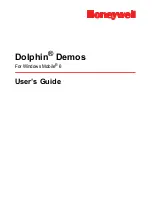
ACD contact center features
246 Communication Manager Guide to ACD Call Centers
Before you start
Before you start to administer the UCID feature, be aware that UCIDs are successfully
transmitted only when all of the communication server network components meet the
requirements (software and connections) specified below.
Some requirements vary, depending on how you want to use UCID. The following table
lists requirements for different applications of UCID.
To maximize the benefits of UCID, it is recommended that all communication servers be
configured with the DEFINITY ECS R6.3 (or newer) software. However, because
upgrading a network is often a gradual process, there may be a communication server that
cannot yet support UCIDs. In this environment, disallow the UCID transmission for any
trunk group connected to a pre-DEFINITY ECS R6.3 communication server. For
information about enabling or disabling UCID transmission on a trunk group, see
Administering UCID
on page 247 later in this chapter.
In the case of a communication server network component that cannot support UCIDs, it is
recommended that the component (ISDN trunk group, ASAI connection, or CMS software)
be administered to disallow the sending or receiving of UCID. For example, if an Avaya
communication server is connected to a non-Avaya switch, then the connecting ISDN trunk
must be administered to not send UCID over that trunk for outgoing calls.
Requirements for UCID applications
Operation
Requirement
UCID sent from communication server to
communication server
ISDN (BRI/PRI) trunks with Shared UUI
or QSIG service protocol
UCID sent from communication server to
CONVERSANT
ASAI link to CONVERSANT
Communication server receives UCID from
CONVERSANT
ISDN-PRI connection (with shared UUI)
between communication server and
CONVERSANT
Switch sends UCIDs to CMS
X.25 or Ethernet connection from switch
to CMS
Switch sends UCIDs to a CTI Application
ASAI link to adjunct
















































